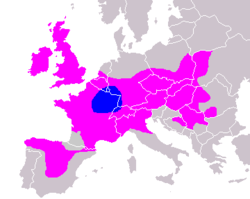This article needs additional citations for verification .(March 2024) |
| Years |
|---|
| Millennium |
| 1st millennium BC |
| Centuries |
| Decades |
| Years |
| 400 BC by topic |
| Politics |
|---|
| Categories |


Year 400 BC was a year of the pre-Julian Roman calendar. In the Roman Republic, it was known as the Year of the Tribunate of Esquilinus, Capitolinus, Vulso, Medullinus, Saccus and Vulscus (or, less frequently, year 354 Ab urbe condita ). The denomination 400 BC for this year has been used in Europe since the early medieval period, when the Anno Domini calendar era became prevalent there.